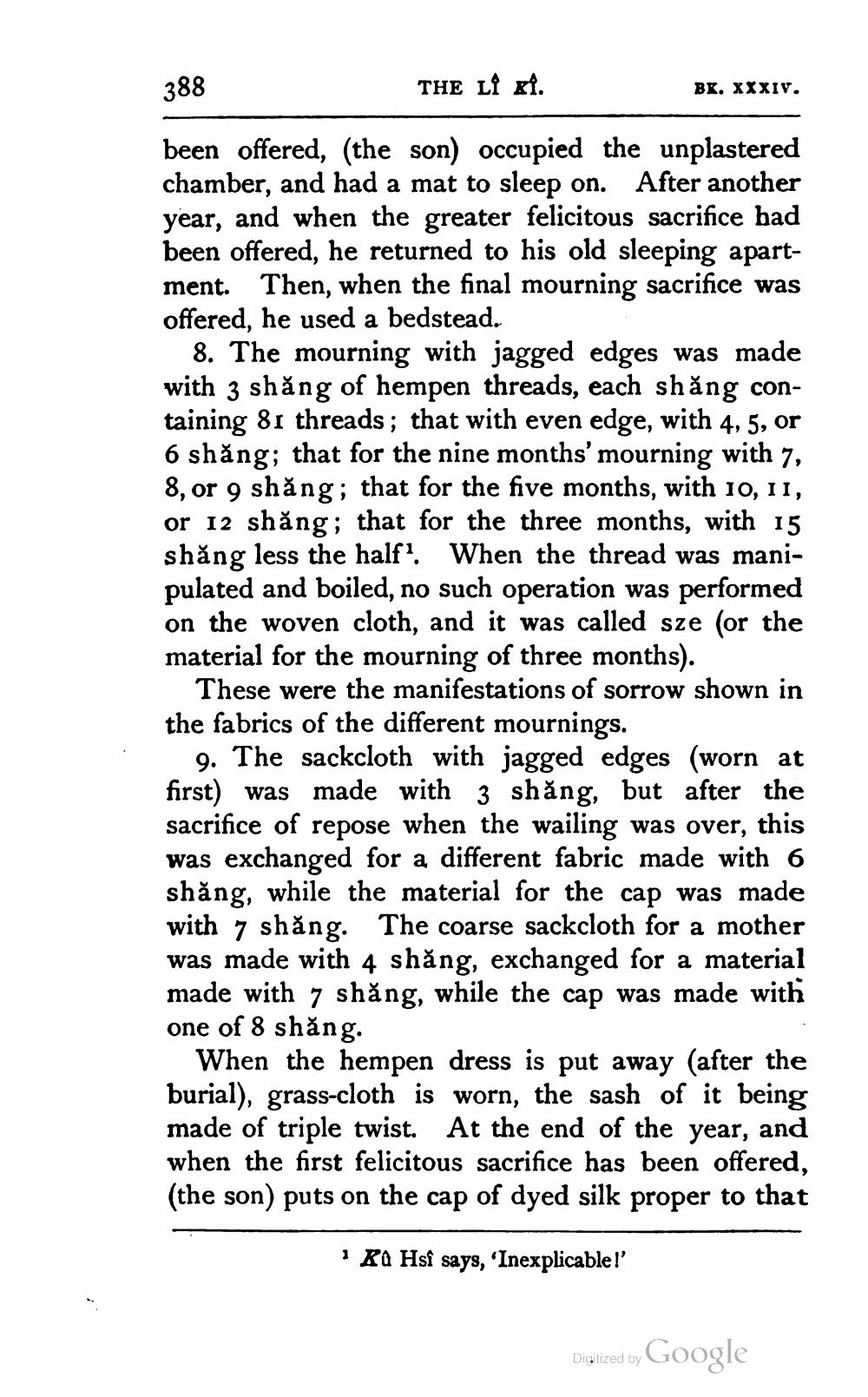________________
388
THE LI Kİ.
been offered, (the son) occupied the unplastered chamber, and had a mat to sleep on. After another year, and when the greater felicitous sacrifice had been offered, he returned to his old sleeping apartment. Then, when the final mourning sacrifice was offered, he used a bedstead.
8. The mourning with jagged edges was made with 3 shǎng of hempen threads, each shăng containing 81 threads; that with even edge, with 4, 5, or 6 shăng; that for the nine months' mourning with 7, 8, or 9 shăng; that for the five months, with 10, 11, or 12 shăng; that for the three months, with 15 shăng less the half'. When the thread was manipulated and boiled, no such operation was performed on the woven cloth, and it was called sze (or the material for the mourning of three months).
These were the manifestations of sorrow shown in the fabrics of the different mournings.
9. The sackcloth with jagged edges (worn at first) was made with 3 shăng, but after the sacrifice of repose when the wailing was over, this was exchanged for a different fabric made with 6 shăng, while the material for the cap was made with 7 shăng. The coarse sackcloth for a mother was made with 4 shăng, exchanged for a material made with 7 shăng, while the cap was made with one of 8 shăng.
When the hempen dress is put away (after the burial), grass-cloth is worn, the sash of it being made of triple twist. At the end of the year, and when the first felicitous sacrifice has been offered, (the son) puts on the cap of dyed silk proper to that
1 Ka Hsî says, 'Inexplicable!'
Digitized by
BK. XXXIV.
Google




